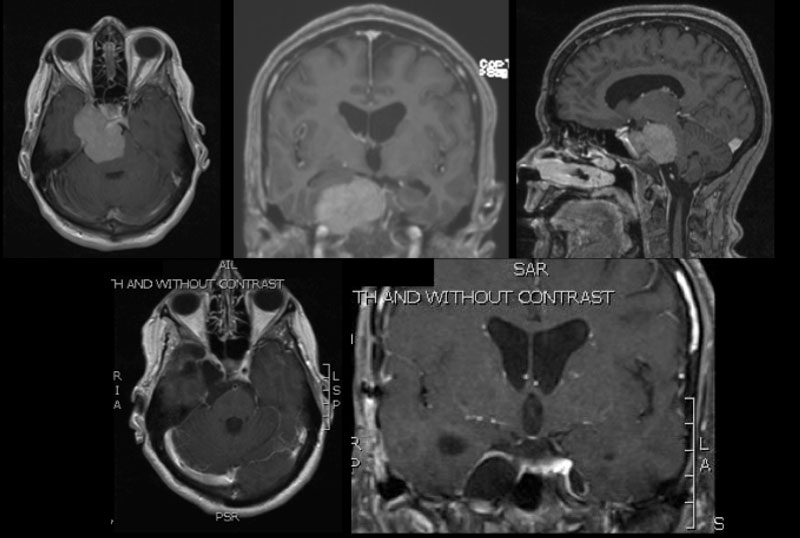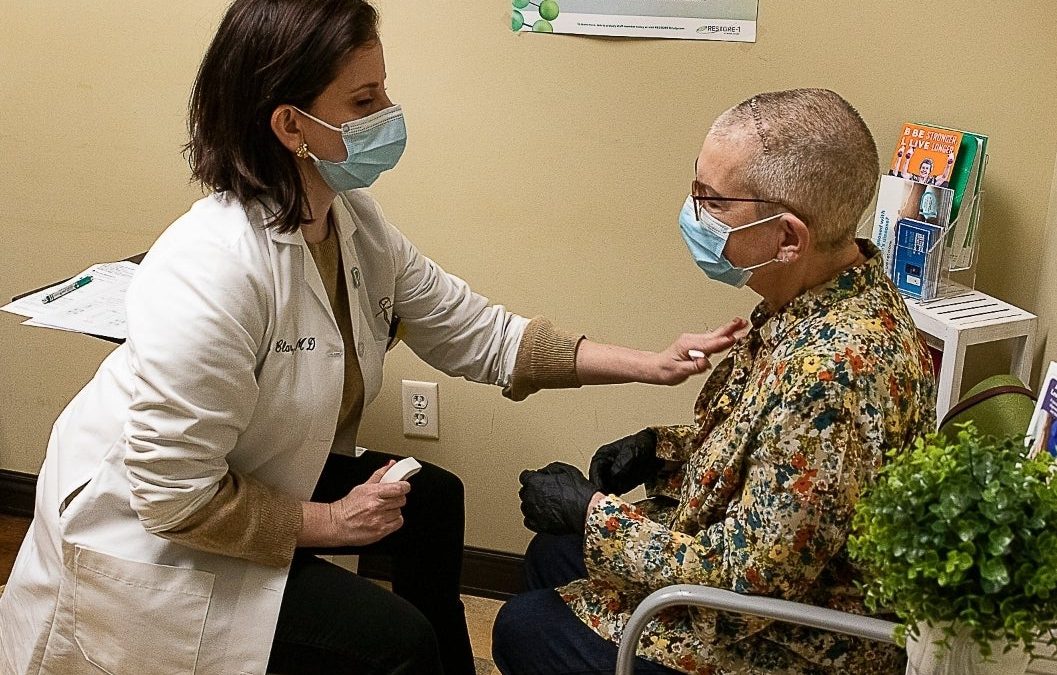Although the majority of tumors of the skull-base are not cancerous but rather slowly growing, they have the capacity to cause harm due to their proximity to critical structures underneath the brain. These tumors commonly present with symptoms of visual or hearing loss or difficulty with coordination and are in close proximity to the brainstem and nerves that sub serve vital functions such as vision, hearing and swallowing. Although a proportion of patients may be managed expectantly or with radiosurgery, surgical management is often necessary and requires careful consideration and planning. On occasion, treatment may require adjunctive radiation therapy or a planned two-stage operation. The participation of a skull-base team consisting of otolaryngology, head and neck and plastic and reconstructive surgeons is often necessary.

Figure 1
This patient is a 48 year old woman presenting with headaches and difficulty with ambulation with MR imaging demonstrating a sizable right sided meningioma of the cavernous sinus and posterior fossa (Pre-operative imaging top row). Post-operative MR imaging (bottom row) was performed after an orbitozygomatic transcavernous approach was performed demonstrating complete resection of the tumor.
Endoscopic Skull-Base Surgery
Advances in the treatment of tumors of the skull base include the use of high definition endoscopes and superior instruments that facilitate smaller and more direct exposures than conventional transcranial surgery. In selected cases a small cosmetically designed incision at the perimeter of the eyebrow allows for a minimally invasive approach to the skull-base allowing for shorter recovery times and less blood loss.








